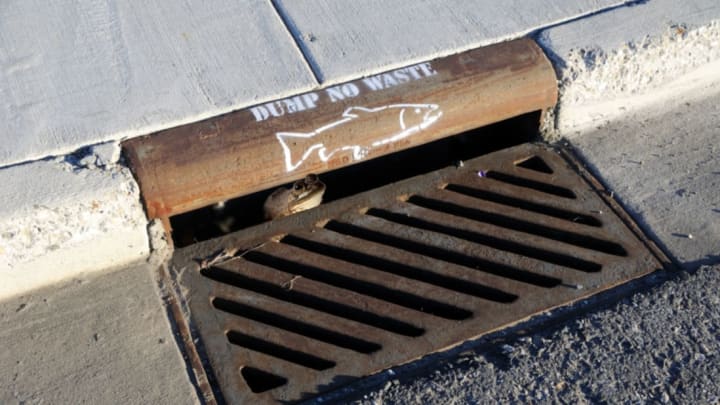As humans take up ever more space and urbanize the untamed wilderness, the animals that call these places home have a tough choice to make: move on to someplace else or adapt to their new surroundings.
Staying put can be especially tricky for animals that rely on sound to communicate with each other and steer clear of danger. Brick walls and human-made noise can change the acoustic landscape and drown out their mating calls or mask the sounds of approaching predators. In Taiwan, plucky little frogs are making the most of things. Instead of letting human infrastructure get in their way, they’re putting it to use.
In suburban and rural areas of Taiwan, it’s pretty easy to find open concrete drains alongside roads and foot paths. Their bottoms are often caked in mud and covered in plant litter. This makes them attractive to small animals as travelways, mating sites, and even living space. But the concrete walls can make conversation difficult by causing sounds to ricochet and echo. Animals listening for each other's calls “will hear not just the direct sound wave, but also reflected waves arriving at different times,” say a team of researchers at National Taiwan University in Taipei.
But there’s an upside to that, depending on who’s doing the talking. “In contrast, some signals (e.g., those with narrow frequency bandwidths) can potentially benefit from reverberations,” the researchers say in a new paper. “The reflected sound waves can make the signal higher in amplitude and longer.” Mientien tree frogs seem to have figured this out, and the males are often found perched in the drains letting out their high pitched mating calls to attract females.
When the team compared the calls of the frogs in the drains with those that sat next to them on the ground, they found that the drain calls were louder and longer. The echoes caused by the concrete didn’t degrade the calls. Instead, the researchers say, the drains acted like “miniature urban canyons” and actually amplified the narrow-bandwidth calls.
While the researchers didn’t look at how female frogs responded to the calls in this study, they suspect that the drain-aided calls are just what they want to hear. Other research has shown that female frogs and other amphibians are more attracted to long, loud calls.
Hanging out in drains isn’t all fun and frog flirting, though. It also presents some challenges. The first is that the shape of the drains and the shelter they provide attracts snakes that can hide in the muck and ambush unwary prey. Many of the frogs seem to get around this by perching on branches leaning against the drain walls so they’ve got a good view of their surroundings.
Another problem is that the steep concrete walls can be difficult to maneuver. Mientien tree frog mating involves the female carrying the male away from his calling perch to a damp place to reproduce, and the females might have a hard time hauling the males out of the drain. Whether that leads a lot of females to abandon males in the drains without mating or even ignore drain callers in the first place remains to be seen. For now, at least, the drain-as-megaphone looks like a clever workaround for tree frogs looking for love.
